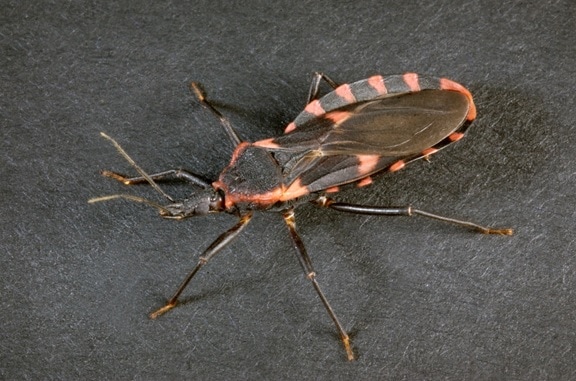STORY
World Chagas Disease Day 2020 - CDC and Partners Shine a Light on Chagas Disease. On this first World Chagas Disease Day, CDC and partners raise awareness of this neglected disease of the Americas.
World Chagas Disease Day 2020: CDC and Partners Shine a Light on Chagas Disease

Triatoma sanguisuga, one of the species of triatomine bugs (or “kissing bugs”) that can transmit the parasite that causes Chagas disease.
A baby boy was born in the United States in August 2010 with complications that initially puzzled his doctors. He had too much fluid in his abdomen, lungs, and around his heart, as well as too much bilirubin in his blood. When his mother told her doctors that she had been diagnosed with Chagas disease—a rarely seen parasitic disease transmitted by triatomine bugs (or “kissing bugs”)—CDC laboratory tests confirmed the baby had the parasite that causes Chagas disease, too. Doctors quickly started the boy on treatment and within 10 months, he was cured.
Though unusual, this boy’s case is hardly one of a kind. The World Health Organization estimates 6–7 million people worldwide have Chagas disease and as many as 10,000 die from the disease each year. In the United States, approximately 300,000 people have Chagas disease.
World Chagas Disease Day is observed every year on April 14 to boost awareness of Chagas disease which, if left untreated, can cause heart failure, stroke, and even death. The key to preventing these outcomes is educating healthcare providers so they can make the correct diagnoses and give life-saving treatments.
In the United States, there are two treatments for Chagas disease: benznidazole, which is commercially available, and an investigational drug, nifurtimox, which is available from CDC.






















.png)











No hay comentarios:
Publicar un comentario